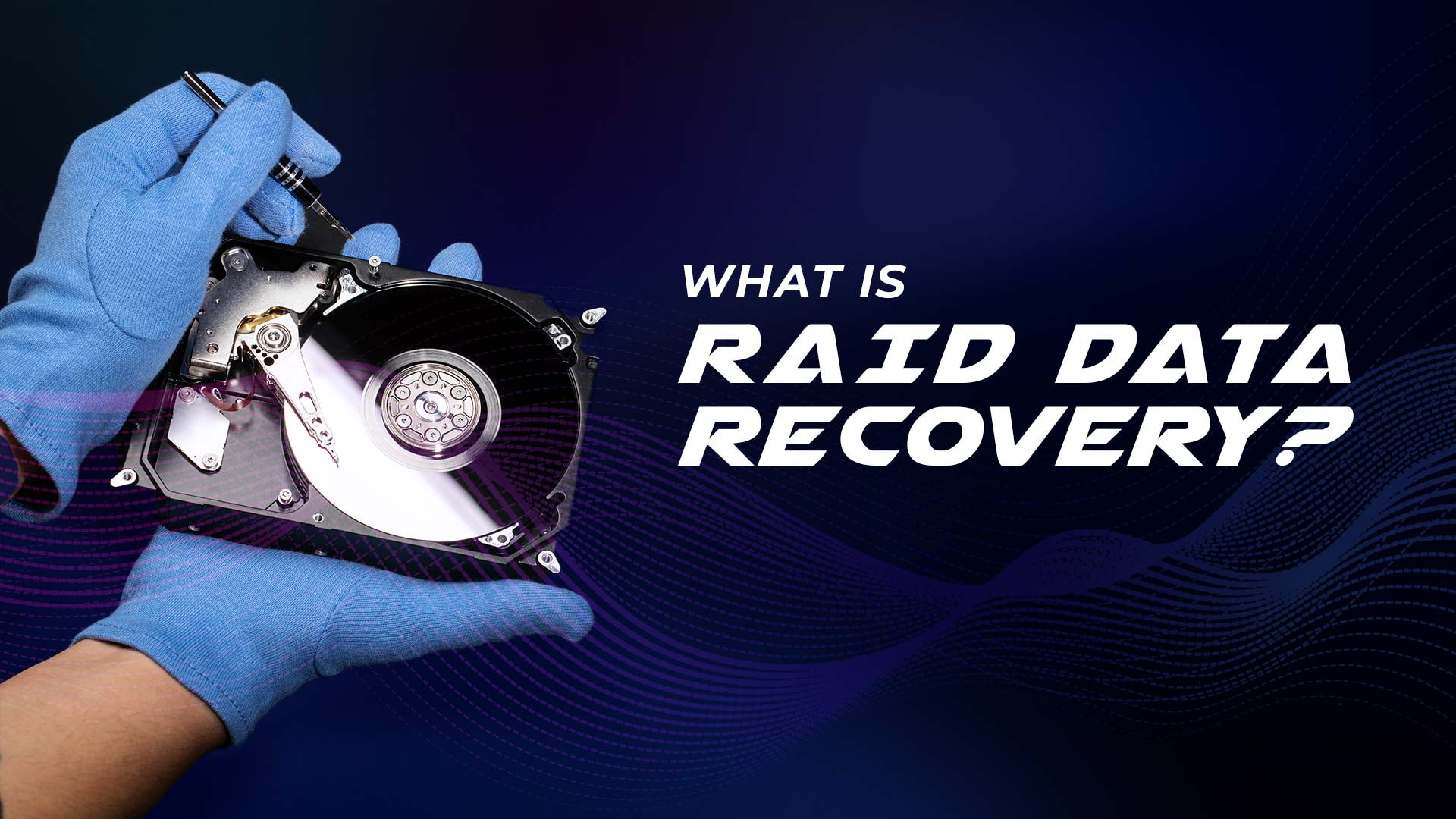What is RAID data recovery and how it works?
RAID (Redundant Array of Independent Disks) is a popular technology used to increase the performance, reliability, and storage capacity of data storage systems. However, despite the benefits of RAID, data loss can still occur due to various reasons, including hardware failure, software corruption, and user error. When this happens, RAID data recovery is the process of retrieving lost or corrupted data from the RAID array.
What is RAID data recovery?
RAID (Redundant Array of Independent Disks) is a technology that combines multiple physical hard drives into a single logical unit, which is recognized by the computer's operating system as a single drive. RAID is used to improve the performance, reliability, and storage capacity of computer systems.
There are several RAID configurations, each with its own benefits and trade-offs. The most common types of RAID are:
- RAID 0: Also known as striping, RAID 0 splits data across multiple drives to improve performance. However, there is no redundancy, so if one drive fails, all data is lost.
- RAID 1: Also known as mirroring, RAID 1 duplicates data across two drives for redundancy. If one drive fails, the other continues to function and the data is safe.
- RAID 5: RAID 5 uses striping and parity to provide both performance and redundancy. Data is split across three or more drives, and if one drive fails, the missing data can be rebuilt from the remaining drives.
- RAID 6: RAID 6 is similar to RAID 5, but with an additional parity block for greater redundancy. It can withstand the failure of two drives without losing data.
- RAID 10: Also known as RAID 1+0, RAID 10 combines mirroring and striping. Data is mirrored across two sets of drives, and the sets are striped for performance. RAID 10 offers high performance and redundancy, but requires at least four drives.
RAID can be implemented through hardware or software. Hardware RAID requires a separate RAID controller card, while software RAID can be implemented using the computer's operating system. Overall, RAID provides improved performance, reliability, and storage capacity for computer systems, making it a valuable technology for both home and enterprise users.
What types of raid arrays can be recovered?
The types of RAID arrays that can be recovered depend on several factors, including the specific RAID configuration, the cause of the data loss, and the tools and techniques used for data recovery.
In general, RAID arrays that use redundancy (such as RAID 1, RAID 5, RAID 6, and RAID 10) have a higher chance of being recovered than those that do not use redundancy (such as RAID 0). This is because with redundancy, the data can be reconstructed from the remaining drives even if one drive fails.
However, even RAID arrays with redundancy can be difficult to recover in some cases, such as when multiple drives fail or when there is physical damage to the drives. In these situations, specialized data recovery tools and techniques may be necessary, and it is important to work with a professional data recovery service with experience in RAID recovery.
Overall, the success of RAID data recovery depends on a variety of factors and can vary from case to case. It is important to take steps to prevent data loss in the first place, such as backing up data regularly and monitoring drive health and performance.
How to recover RAID data?
- Identify the cause of the data loss: Before attempting to recover RAID data, it is important to determine the cause of the data loss. This could be due to hardware failure, software corruption, user error, or other issues. Identifying the cause can help determine the best course of action for recovery.
- Determine the RAID configuration: Knowing the RAID configuration is essential for successful data recovery. This includes the RAID level (such as RAID 0, RAID 1, RAID 5, etc.), the number of drives in the array, and the order and layout of the drives.
- Assess the damage to the drives: If one or more drives in the RAID array have failed, it is important to assess the extent of the damage. This may involve running diagnostic tests on the drives, such as checking for bad sectors or mechanical issues.
- Rebuild the RAID array: If the RAID array can be rebuilt, this is typically the first step in data recovery. This involves reconstructing the array from the remaining drives and rebuilding any data that was lost due to drive failure.
- Extract data from the drives: If the RAID array cannot be rebuilt, or if data was lost due to software corruption or other issues, the next step is to extract data directly from the drives. This can involve using specialized data recovery tools and techniques, such as imaging the drives or scanning for lost or corrupted data.
- Verify the recovered data: Once the data has been recovered, it is important to verify its integrity and ensure that it is complete and usable. This may involve comparing the recovered data to backups or other sources of data, and checking for errors or inconsistencies.
Overall, RAID data recovery can be a complex and challenging process, and it is important to work with a professional data recovery service with experience in RAID recovery to ensure the best possible outcome.
How much is raid data recovery
The cost of RAID data recovery can vary widely depending on several factors, including the specific RAID configuration, the cause of the data loss, the number of drives involved, the extent of the damage to the drives, and the complexity of the recovery process.
In general, RAID data recovery can be more expensive than recovery for single drives, as it often requires specialized tools and techniques and may involve more complex procedures for rebuilding the array and extracting data from multiple drives.
The cost of RAID data recovery can range from a few hundred to several thousand dollars, depending on the specific circumstances. It is important to work with a reputable data recovery service that provides a clear and transparent pricing structure and can give you an accurate estimate of the cost before beginning the recovery process.
It is also important to consider the value of the data that is being recovered and weigh the cost of recovery against the potential loss of important files, documents, or other critical data. In some cases, the cost of data recovery may be justified by the value of the data and the potential impact of its loss.




